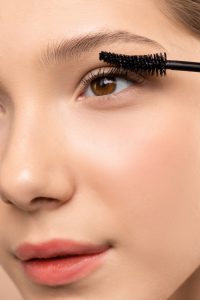The Ultimate Guide to Lash Care

Lashes are an essential part of our eyes, as they protect them from debris and dust, and also add an element of beauty to our appearance. However, just like other parts of our body, lashes can also experience problems. In this blog post, we will discuss some common lash problems and how to treat them.
1. Thin Lashes
Thin lashes can be caused by several factors, such as genetics, aging, or overuse of lash extensions. If you’re dealing with thin lashes, there are several things you can do to improve their thickness and appearance:
Use a Lash Growth Serum
Lash growth serums contain ingredients that stimulate lash growth and can help your lashes become thicker and fuller. Apply a lash serum to your lashes daily for several weeks or months to see results.
Take Supplements
Supplements containing biotin, vitamin E, and other essential nutrients can help promote lash growth and improve overall lash health.
Be Gentle With Your Lashes
Avoid rubbing your eyes or pulling on your lashes, as this can damage them and make them appear thinner.
2. Lash Shedding
Lash shedding is a normal process, as lashes have a natural growth cycle that involves shedding and regrowing. However, excessive lash shedding can be a sign of an underlying problem, such as an allergy or infection. Here are some tips for managing lash shedding:
Avoid Harsh Lash Products
Using harsh lash products or applying lash extensions can cause excessive lash shedding. Stick to gentle, natural lash products, and avoid overusing extensions.
Practice Good Hygiene
Wash your face and remove all makeup before going to bed to avoid clogging the hair follicles that lead to lash shedding.
Consult a Doctor
If you’re experiencing excessive lash shedding or have other symptoms, such as redness or irritation, consult a doctor for diagnosis and treatment.
3. Blepharitis
Blepharitis is a common condition that causes inflammation of the eyelids, including the lashes. This condition can cause your lashes to become itchy, red, and swollen. Here’s how to treat blepharitis:
Practice Good Hygiene
Regularly cleaning your eyelids and lashes with a gentle cleanser can help reduce inflammation and prevent further irritation.
Use Warm Compresses
Applying warm compresses to your eyelids can help loosen any debris or crusts that have formed and soothe the inflammation.
Use Prescription Medication
In some cases, a doctor may prescribe medication, such as antibiotics or steroids, to help manage blepharitis.

4. Lash Dandruff
Lash dandruff, also known as seborrheic dermatitis, is a common condition that causes flakes to form on the lashes and eyelids. It can be caused by overgrowth of yeast on the skin or other underlying skin conditions. Here are some tips for treating lash dandruff:
Use a Gentle Shampoo
Wash your lashes and eyelids with a gentle shampoo, such as baby shampoo, to help remove any flakes and reduce inflammation.
Apply an Ointment
Applying an ointment, such as petroleum jelly, can help soothe and hydrate the affected area.
Consult a Doctor
If over-the-counter treatments aren’t effective, consult a doctor for a prescription medication or other treatment options.
5. Ingrown Lashes
Ingrown lashes occur when a lash grows in the wrong direction and starts to grow into the skin. This can be painful and can lead to infection if left untreated. Here’s how to treat ingrown lashes:
Use Warm Compresses
Applying warm compresses to the affected area can help reduce inflammation and soften the skin, making it easier to remove the ingrown lash.
Remove the Ingrown Lash
Use tweezers to carefully remove the ingrown lash. Be sure to disinfect the tweezers and the area around the ingrown lash before and after removal.
Avoid Pulling Out the Entire Lash
Pulling out the entire lash can cause further irritation and may even lead to scarring. Only remove the portion of the lash that is ingrown.
Consult a Doctor
If you’re experiencing frequent ingrown lashes or are having difficulty removing them, consult a doctor for advice and treatment.
In Conclusion
Lashes are an important part of our eyes and overall appearance, and it’s important to take care of them. By following these tips for managing common lash problems, you can help keep your lashes healthy and beautiful. Remember to always practice good hygiene, avoid harsh products, and consult a doctor if you’re experiencing any persistent or severe lash problems.

